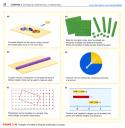In this first post we will introduce some first ideas around pattern recognition and analysis in mathematics.
Patterns are a key concept throughout all grades, and we will start by exploring how we can pull games out of pattern concepts.
Here are some quotes from the book elementary and middle school mathematics, teaching developmentally, authored by John A. Van De Walle
‘the most basic idea in mathematics is that mathematics make sense!’
‘consider the study of Algebra.One can learn to graph the equations of a parabola by simply following rules and plotting points…But understanding why certain forms of equations always produce parabolic graphs involves a search for patterns in the way numbers behave…Pattern is in everything around us, in nature, art,buildings,science, medicine,biology and sociology’ page 13
‘Children develop understanding in maths through:
1)assimilation :refering to the use of existing schemas to give meaning to experiences.
2)accomodation is the process of altering existing things or ideas that contradict or do not fot into existing schemas.’ page 23
To understand the above better we will give an example:
In this exercise children have to ‘make a list of numbers that begin with a ‘start number’ and increase by a fixed amount we will call the jump number. First try 3 as the start number and 5 as the jump number. Your task is to examine this list and find as many patterns as possible’
A game that could be pulled out of the above pattern problem is sudoku. After playing sudoku children could analyze the patterns that they made to solve the puzzle.
A list of more exercises is found below:
exercise two: two machines, one job p.15 this could be similar to tetris
exercise three: one up one down this could be similar to one of the brain age games
We will keep researching pattern exercises, to view more classic problems in Math, please visit : http://mathforum.org/dr.math/faq/faq.classic.problems.html
Also a visualization of models/patterns that illustrate mathematics concepts can be found below:



